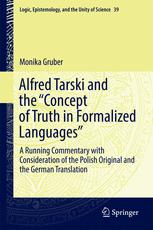

Most ebook files are in PDF format, so you can easily read them using various software such as Foxit Reader or directly on the Google Chrome browser.
Some ebook files are released by publishers in other formats such as .awz, .mobi, .epub, .fb2, etc. You may need to install specific software to read these formats on mobile/PC, such as Calibre.
Please read the tutorial at this link: https://ebookbell.com/faq
We offer FREE conversion to the popular formats you request; however, this may take some time. Therefore, right after payment, please email us, and we will try to provide the service as quickly as possible.
For some exceptional file formats or broken links (if any), please refrain from opening any disputes. Instead, email us first, and we will try to assist within a maximum of 6 hours.
EbookBell Team

4.8
14 reviewsThis book provides a detailed commentary on the classic monograph by Alfred Tarski, and offers a reinterpretation and retranslation of the work using the original Polish text and the English and German translations. In the original work, Tarski presents a method for constructing definitions of truth for classical, quantificational formal languages. Furthermore, using the defined notion of truth, he demonstrates that it is possible to provide intuitively adequate definitions of the semantic notions of definability and denotation and that the notion in a structure can be defined in a way that is analogous to that used to define truth. Tarski’s piece is considered to be one of the major contributions to logic, semantics, and epistemology in the 20th century. However, the author points out that some mistakes were introduced into the text when it was translated into German in 1935. As the 1956 English version of the work was translated from the German text, those discrepancies were carried over in addition to new mistakes. The author has painstakingly compared the three texts, sentence-by-sentence, highlighting the inaccurate translations, offering explanations as to how they came about, and commenting on how they have influenced the content and suggesting a correct interpretation of certain passages. Furthermore, the author thoroughly examines Tarski’s article, offering interpretations and comments on the work.